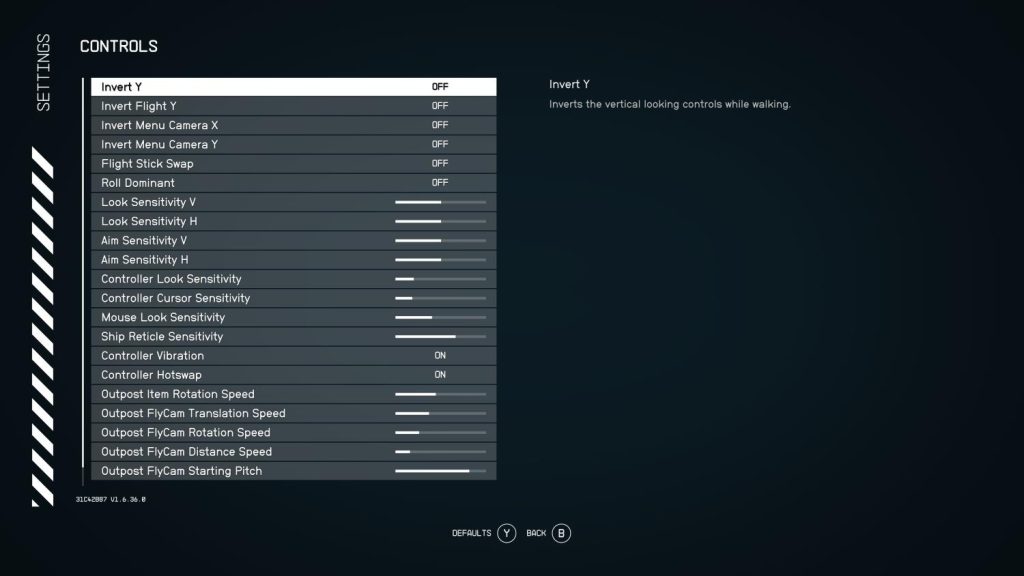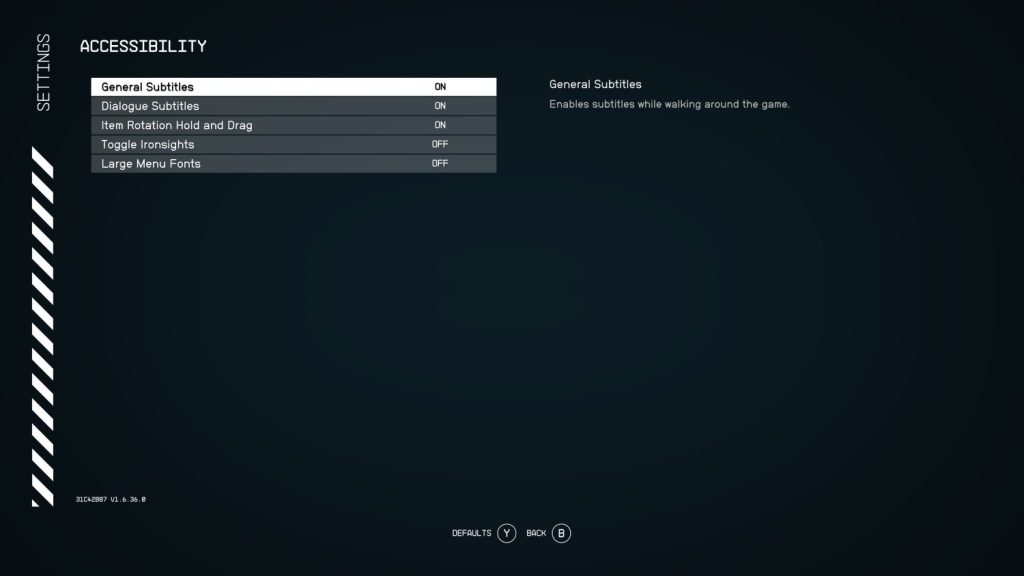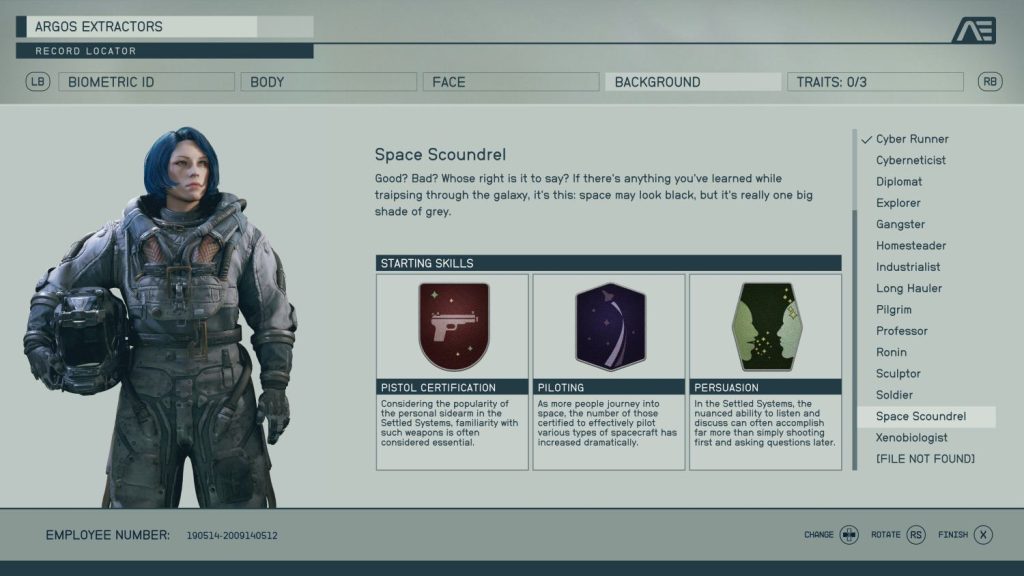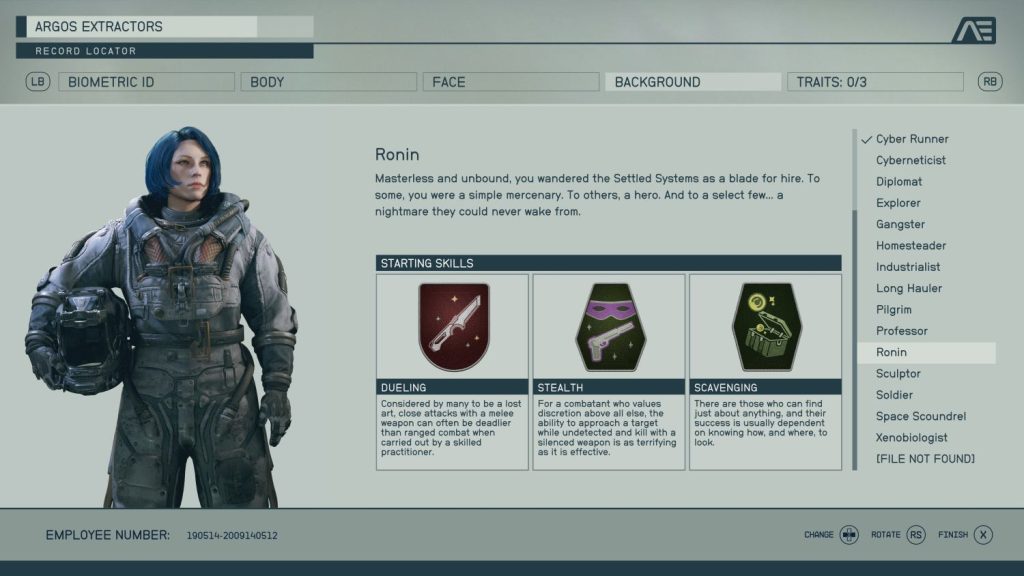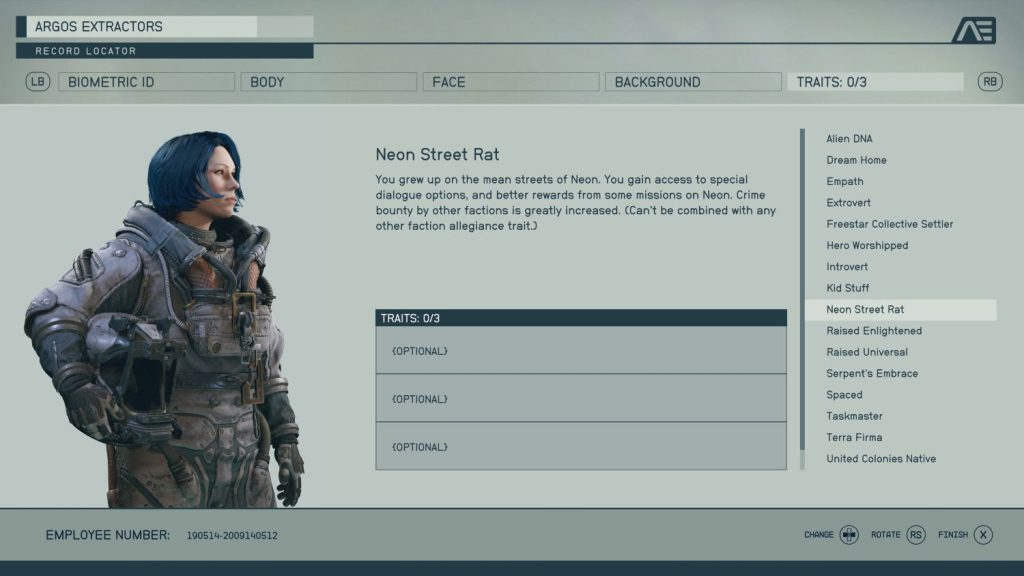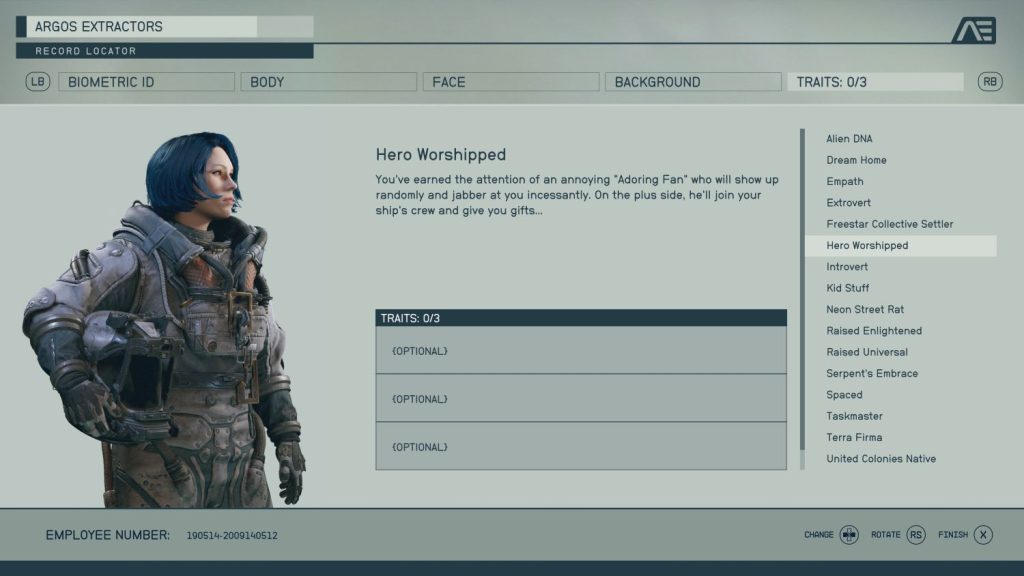Starfield Review
Starfield Review
Starfield. One of the biggest games of the year and arguably one of the most important releases for Xbox in quite some time. The game carries with it the weight of past generations along with the dreams of a future where the company makes its long-awaited return to the top of the gaming world.
Starfield is Bethesda’s first new IP in 25 years after a long line of Elder Scrolls and Fallout titles that players have enjoyed for years, so you can just imagine how much of a build-up this game has going for it. In a time when Xbox is slowly gaining momentum after a good year and some great showcases, the stakes have never been higher.
It’s been described as “Skyrim in space,” and if that’s what the game is, then it has very big shoes to fill. But is it just that? Or does it have more to offer players who are looking for their next big sci-fi adventure?
First off, let me set expectations. I played Starfield on a PC with these specs while using a controller:
- Ryzen 5 5600x, 16 GB DDR4 3600 RAM, NVIDIA RTX 3050, 1TB NVMe SSD
- Asus 27″ 1440p Monitor and Legion 32″ Y32p-30 4K Monitor
Based on the system requirements of the game, my rig can somewhat handle the recommended settings. Here are some quick frame rate comparisons based on Steam’s FPS counter, with FSR2 on, and dynamic resolution turned on to default values:
4K
- Medium – 30-35fps
- High – 25-28fps
- Ultra – 15-20fps
1440p
- Medium – 65-75fps
- High – 45-55fps
- Ultra – 35fps-45fps, dips to 25fps during heavy sequences
I played through the game at 1440p with high settings and with dynamic resolution turned off (set to 100%), FSR2 turned on, and averaged frame rates hovering between 25-30fps. The game ran fine for the majority of my playthrough, with minimal frame drops outside of the aforementioned range during busy sections.
I’d also like to share the various options and settings in the game that players can tweak. You’ll notice some basic settings here, not quite as numerous as other titles, but more importantly, there’s the option for upscaling via FSR2.
It bears saying that since the game is so huge, it was mathematically impossible to cover everything, so what you will read below is a playthrough based on the above settings and nearly 100 hours of gameplay.
Got it? Good, let’s (grav)jump in!

It’s hard to explain just how massive Starfield is, but in case you were skeptical about the Skyrim in space reference, you can rest easy because it is mostly that. Better yet, it is a Bethesda game in space, if that makes sense. Don’t expect a reinvention or evolution of the formula! Based on Todd Howard’s history and style, fans of previous titles already know what to expect, just bigger and with more time to cook thanks to a hefty delay.
The year is 2330 and humans are now spacefarers that have occupied the vast expanse of space. You start as a miner from the Argos Corporation, and while on a routine mining run, you come in contact with an Artifact that gives you visions of unknown origins that are too vague to make anything out of. Due to a series of events, you move to join Constellation, a group of space explorers that seek out these rare Artifacts in search of answers.
That’s about as much of the story as I’ll say because I want to avoid spoilers. The Starfield experience is heavily reliant on how players will approach the narrative, may it be by following the golden path or wherever the next random conversation takes them. Each player will likely play the game differently and experience things at different sequences, with some already forging their own path as early as choosing backgrounds during character creation.
One more thing I’ll say is that the main questline was interesting enough to keep me invested from start to finish because of the world it built. Ok, that’s really it, nothing more about the story, I promise.

It all starts with your character, and Starfield has an extensive character creator that will take a while to get through. Players can expect a wide array of options and sliders, ranging from facial features to color shades, and much more. No racial selection here, as everyone will be a human character, but the deeper details will fall under backgrounds and traits that will fully differentiate characters from each other.
Depending on what background players choose, they’ll be given 3 starting skills that may dictate their style of play. In my case, I chose to be a soldier who takes combat with a heads-on approach, and some dialog options exclusive to being a soldier will sometimes pop up when the situation calls for it, offering a reply that may be liked by some companions but disliked by others based on their personalities.
Players can also select a combination of traits, which will give them certain bonuses during gameplay. For example, choosing the Alien DNA trait will give increased health and oxygen but healing items won’t be as effective, while the Terra Firma trait gives increased health and oxygen on the surface but decreases when in space. There’s a number to choose from, further distinguishing you from the next spacefarer.
As players progress through the game, they can even align themselves with various factions. Playing as a soldier, I naturally joined the Freestar Rangers, a peacekeeping unit that upholds the rights of citizens. I played a do-gooder during my time with Starfield, but players can go the opposite extreme and be a plague on the settled systems if they choose to be, opening up new quests, rewards, and interactions.
Interacting with the many NPCs in the game will give you many opportunities to pursue or stray from your path. Apart from the various dialog options, players can occasionally persuade NPCs from a choice being made, and in some instances, can spell the difference between a gunfight and an amicable conclusion. Thankfully, the dialog in Starfield is well-written and goes beyond simply yes or no responses to make dialog more engaging. There’s always information to be had and they’re made interesting enough thanks to the decent voice performances from the cast.
It’s in these familiar and interconnected systems that players will start to feel the breadth and scope of Starfield, intimidating as they may be. The character-related systems alone may already sound mind-blowing to some because of so many moving parts and things to do, but Bethesda games have always been about the RPG experience and Starfield delivers that in spades.

If previous Bethesda titles took you through post-apocalyptic regions and dragon-laden timelines, the galaxy is Starfield’s playground and it is unmistakably vast. Planets are as varied as you can imagine, with some livable and surrounded by lush greenery, while others will be cold and treacherous, damaging the regenerative property of your suit due to extreme conditions. Most of the planets I’ve been to feature impressive landscapes and terrain, making them feel like unique locations with varying degrees of gravity to contend with and native flora and fauna to scan.
While there are a number of planets that are interesting enough to visit because of interest points, most are there to basically populate the space, so to speak. Even planets with interest points aren’t “packed” and you could walk or sprint for a while before reaching your desired waypoint. While I would have preferred a smaller number of handcrafted planets rich with activities, the developers clearly wanted their universe to be as wide and as encompassing as their gameplay systems.
Getting to these planets and systems will require a ship, and Starfield offers players an extensive shipbuilder that has… You guessed it, a ton of other systems that make it more than just simply flying a ship. While in flight, players can manually shift energy to any of the 6 components depending on the scenario, giving players full control of their craft. Need a faster craft? Shift more power to the engine! Readying up for a fight? Boost your shields to the max. You’ll be taking out energy from another component to power the other on the fly, keeping you on your toes.
Ship combat in Starfield can entertain for a bit but it is also clunky, and I’ve been in a number of situations that simply pointed me to a simple strategy – max my shields and fire everything until enemies die, especially if you’re fighting equally leveled adversaries. Generally, ships aren’t agile crafts compared to the likes of dogfight-style games, so tactics and evasive maneuvers don’t matter much unless you are swarmed. Interestingly, you can also dock and invade enemy ships, giving a nice change of pace and variety to combat.
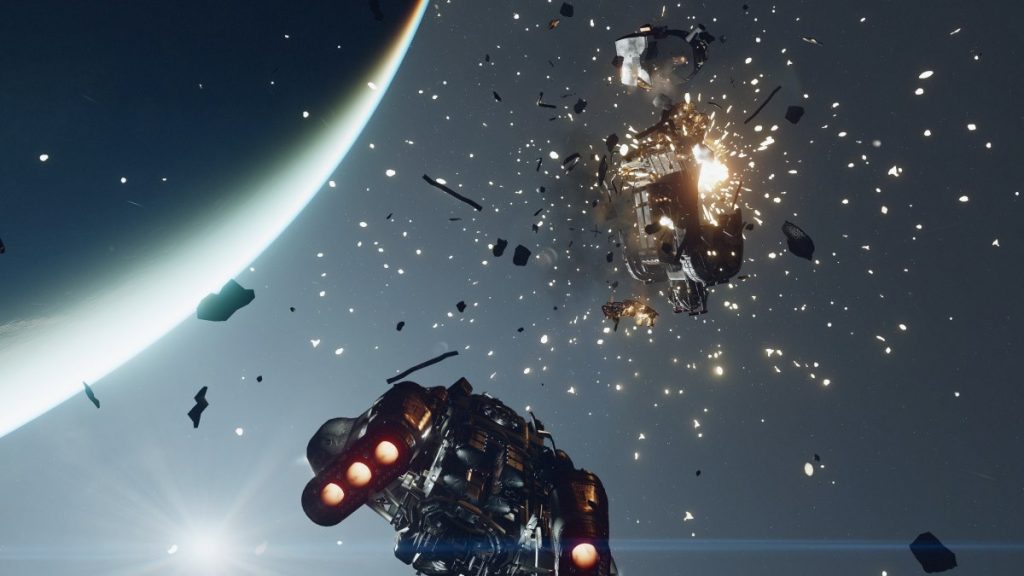
Your ship is something you can make your very own, just like your character, and Starfield has an impressive customization suite that will allow players to create the ship of their dreams. I’m sure a ship shaped like a p***s will make its way around space sooner or later, so this just speaks to the freedom and creativity that Bethesda is giving players to build to their liking, but still under certain limits like requiring specific parts and components for it to fly. You can even bring members along to provide passive bonuses to ship systems, but I hardly felt a difference whether they were there or not.
Space travel isn’t at all what I expected from Starfield because it is not seamless and requires several stages before actually getting to your destination. After entering the vicinity of a planet, you may be scanned by security for contraband items and can soon move around the immediate space after that. You don’t get to actually circle the planet from space but instead fly around a set area with some points of interest, maybe a structure you can dock or something else. That aside, players will make their way planetside after another transition sequence.
In case you haven’t noticed with the way I described it, Starfield will burden players with a ton of loading screens and transition sequences. Jumping through systems, entering the territory of a planet, landing on a planet, docking… the list goes on, and there’s a lot of loading in between each step. This could be because of the immense scope of the game, but players expecting a seamless experience should be warned. Thankfully, the load times aren’t that long and there are convenient fast travel options that can skip certain steps, making an otherwise tedious task somewhat bearable.
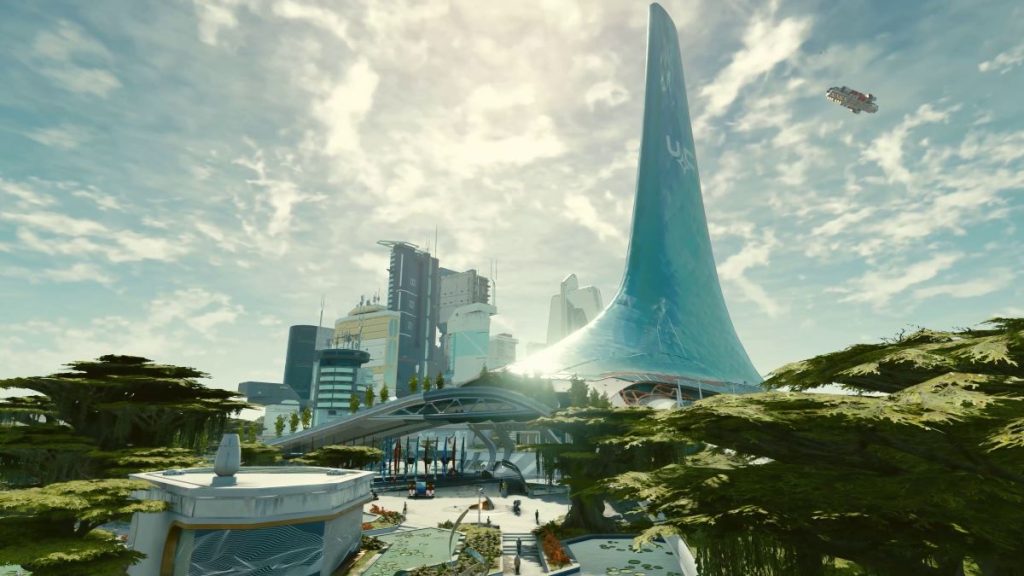
Should players overlook the many loading screens in Starfield, they will be treated to some stunning environments that elicit a sense of wonder. Its biggest city, New Atlantis, is a bustling area full of activity and life with its towering structures and futuristic locales. Akila City isn’t quite as developed, sporting a more “country” look with its wooden structures and Western-inspired style. Neon is as the name suggests, a haven for tourism with its neon-lit signs and active nightlife – a particular favorite of mine.
Each location has so much personality as they’re governed by unique systems that further feed into the role-playing players will be doing. That said, exploring these sprawling cities may pose a problem because the game does not have a mini-map for these areas, so getting lost is something you’ll be doing for a good bit.
Speaking of detail, Bethesda has done some massive work here, both in external and internal environments. From sliding doors to the computers that flip open, it all feels very “sci-fi” and ups the immersion factor by a lot. Even the food (who can forget the sandwiches) looks good, and there are so many interactable items strewn around that players can pick up. These small things may be overlooked, but it’s impossible not to point out this attention to detail.
It’s hard to communicate how much better these locations can look especially when I didn’t play the game at max settings, but even then, it is very evident how much detail was poured into the game. I’d go as far as saying that if your PC cannot play Starfield at least at 1440p, then you might be better off playing it at 4K 30fps (I have not tested it, but it is marketed as such) on an Xbox Series X to appreciate the views.

Quests are equally impressive, often containing many steps before a satisfying resolution. Starfield quests are a mix of interesting and not-so-interesting, but one thing I like about them is how they all work towards building a connected world and adventure where some of your actions may result in a different outcome later down the line.
That said, the NPCs offer a stark contrast to the locations and environments, sticking out like a sore thumb. While their outfits look fantastic and well-detailed, the actual character models themselves could have used more love. They’re typical Bethesda NPCs, if that makes sense, with blank stares and rough facial and overall animations that feel like they didn’t evolve over the past years. They look and feel dated, and oftentimes, they’ll even get in your way when you need to retrace your steps when walking through a tight corridor, among other blunders.
NPC AI isn’t the brightest, sadly, and I’ve stumbled upon a few times where I would trip on some mines that my companion would just walk over while I jumped away in fear of death. While they’re useful in combat, you’ll need to take the good with the bad, and it made me not bother to always take them out on a mission. Speaking of AI, enemy AI isn’t the smartest as well, with predictable movements that don’t take advantage of their numbers during encounters, making the game easier than it should be.
Speaking of combat, Starfield takes some hints from Fallout 4 and introduces a fast(er) pace to encounters while allowing players to work with first-person and third-person modes. I quickly tried out the third-person mode but found it to be extra clunky and hard to aim with compared to the first-person, so while I appreciate the options, I can imagine players will want to stick to the default first-person mode. I expected more enemy variety over the course of the game, but humans are your main adversaries in Starfield.

That said, combat feels… sufficient. Nothing special nor crunchy as dedicated shooters, but not too bad for an RPG title. One thing players may find a bit difficult to deal with is the quick switching of weapons. You can’t cycle through weapons in the conventional sense, switching between primary and secondary at the press of a button, but you’ll need to assign multiple firearms to a “Favorites” shortcut that can be accessed through the D-Pad, requiring multiple presses to make the switch.
Starfield also offers a familiar level and skill system based on proficiency, allowing them to get better at certain things as they use it, which I quite liked. The beauty in this is that players are given the freedom to enhance their skills naturally, even expanding to other skills given enough time and effort, incentivizing exploration. Throughout the skill trees, there’s much to learn that will greatly enhance your playthrough, but some skills do feel like filler compared to some obvious choices.
This exacerbates one of the issues I had with Starfield as many of its systems are hobbled by layers upon layers of menus. Some may call it minor, but you’ll always need to dig before you get to something. Want to equip a weapon? Find it in the inventory under the weapon section which takes at least 3 button presses instead of allowing for an “equip this” while picking it up.
With the numerous interactable items in the game, it can get tedious after a while, and I felt that I didn’t need to interact with everything else because just thinking of organization was a pain. The tediousness also extends to the lockpicking mini-game, which is actually confusing enough to start with, and it’ll just get tiring and more repetitive as the game goes by.
The problems extend to navigation as well, as it is very hard to find a certain planet just by browsing the star map. Normally, you’ll get fast travel options through the quest list, but if you’re looking to go back to a location for whatever reason unless you remember what system it is on, it’s tough to find it again.
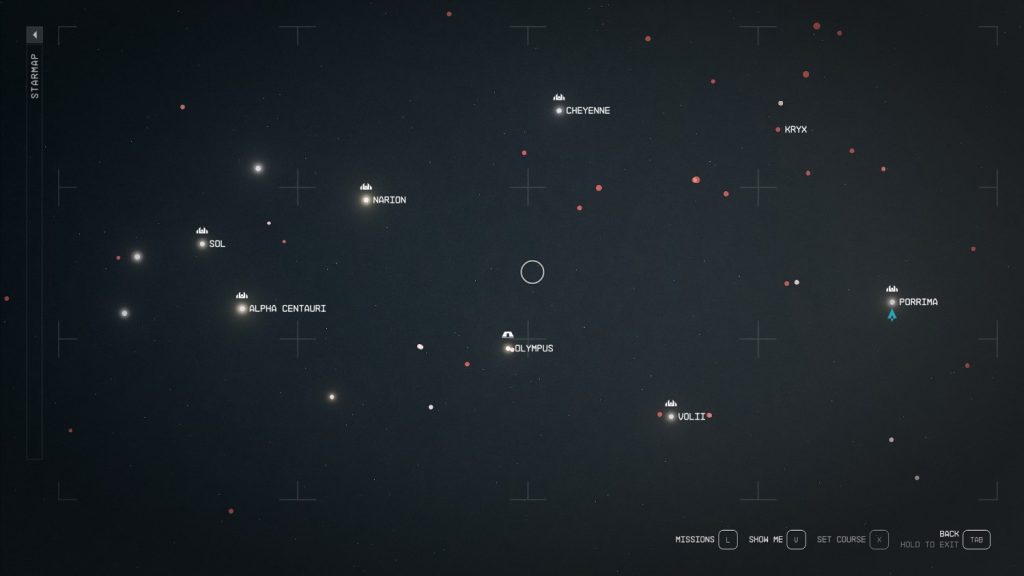
Looking back, we have not even covered outpost building, research, crafting, upgrading, and other small systems and mechanics sprinkled in between. There’s a dizzying amount of systems in Starfield, as with a typical Bethesda game. While it can get intimidating to new players, the beauty of Starfield is that newcomers don’t need to engage in every system that the game offers. Of course, it is vastly more rewarding and time-consuming to go ahead and try everything out, but players aren’t exactly punished for not wanting to do so.
One thing that Starfield does fail to do for newcomers is introduce them to many of these systems. At some point, you’re left to fend for yourself and just figure things out, which may lead to players not trying out some features at all. Personally, at no point did I need to feel to craft anything or modify my weapons, even outpost building was something I mostly overlooked. While I realize that a lot of these things are typical of a Bethesda title, it could be a big hurdle for new players who want to try it out.
With all that’s said about Starfield being a Bethesda game, we can’t talk about it without tackling bugs. Surprisingly, the delay worked wonders for it, as Starfield didn’t have any glaring bugs based on my playthrough. While I had to restart the game a couple of times due to a quest not triggering and just general pathing problems from NPCs, it seems to be quite stable, and I did not (or have not) encountered anything that wrecked my experience. I have heard other more unfortunate encounters from other reviewers, but of course, mileage will vary.
It took me about 30 hours to power through the main questline of Starfield with some side shenanigans here and there. Obviously, even at nearly 100 hours, I feel that I am far from done with the game because there’s so much to do and even more possibilities to take.
I can also confirm that there is indeed a New Game+, but I won’t spoil what players can experience on that front.

In the end, Starfield is all about choice and how much players want to engage with the offerings. Through this myriad of choices, players can uncover the world at their own pace and choose just how much of the game they want to actually play. It fulfills the space fantasy to a certain degree, and there’s definitely a pull to just wander aimlessly and take on the next thing you stumble upon.
What we liked:
- Convenient fast travel options in and out of locations, ships, and planets
- A ton of interconnected systems that work well with each other
- Gunplay is fast and responsive, although not particularly outstanding
- External and internal environments are extremely detailed
- Polished well above normal Bethesda standards
What we didn’t like:
- NPCs are a bit stiff and look dated compared to the rest of the game
- Lots of things are buried under menus making navigation tedious
- Third-person mode doesn’t feel as good as first-person mode
- A ton of loading screens and transitions
- Some gameplay systems have a tendency to get overlooked because it is not introduced well
Verdict: Buy it!

Starfield is arguably the most important Xbox release in a long while, and it delivers an impactful experience that Bethesda fans have been waiting for. Despite a few dated mechanics and systems, it’s a relatively polished release compared to their usual offerings, and that alone is a massive achievement.
As is the case with Bethesda games, there’s always a caveat, because Starfield isn’t for everybody. The game is littered with so many interconnected systems that players may find intimidating, but with so much of it anchored on giving players a choice, engaging in all of these systems is also optional but highly rewarding. RPG fans will certainly get a kick, but folks wanting a more self-contained adventure may want to look elsewhere.
I had hoped to see Starfield as a great step towards an evolution in the Bethesda formula, but sadly, this isn’t the case. Starfield is, most likely, what you would expect it to be, and while that’s good enough for fans, it does miss out on the opportunity to take that next step.
In the end, Starfield is a game that Xbox needed, and if any of Bethesda’s previous titles are any indication, exploring the vast reaches of space along with community mods will keep the game going for a very very long time.
*Starfield was reviewed on a PC with a review code provided by the publisher.


